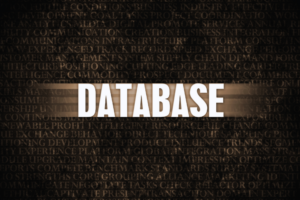Food trends come and go, and the United States is a land of complete culinary diversity, with something new lurking around every corner. But lying just beneath the surface of this vibrant food culture is an unforgiving tapestry of regulations and restrictions designed to protect public health and safety. Everything from foods to ingredients has been banned in the US for various reasons over the years, from health risks to ethical concerns. Many such bans successfully fire up debates related to personal freedom, public health, and what role the government should-or shouldn’t-play in daily American life. Throughout this article, we will discuss some of the major food item bans happening in the US and explore in further detail what actually precipitates them and their far-reaching implications.
-
Kinder Surprise Eggs: A Controversial Delicacy
Probably the most famous food ban in the US is one targeting Kinder Surprise Eggs, chocolate eggs with a popular toy hidden inside. While this chocolate egg has been loved by people in many parts of the world, it has remained banned in the US since 1938 due to the law forbidding the sale of food items containing non-edible objects. The concern is that the small toy inside could pose a choking hazard, especially for young children. Despite their popularity overseas, Kinder Surprise Eggs are illegal in the US, though a modified version, Kinder Joy, which separates the toy from the chocolate, is available.
-
Sassafras: The Forbidden Root Beer Flavoring
Once common in root beer, sassafras was banned in the US in the 1960s when lab animals dosed with safrole, one of the compounds in sassafras, began developing cancer. In an attempt to clean the food supply from potentially carcinogenic agents, the Food and Drug Administration banned the sale of sassafras. Thus, root beer makers had to reformulate their products using artificial flavorings or extracts that contained no safrole. The banning of sassafras represents the conflicted tug between tradition and public health.
-
Raw Milk: A Heated Debate Over Health and Safety
Unpasteurized milk or simply raw milk is another banned food product in most US states. Indeed, the FDA has long warned that raw milk can contain a number of harmful bacteria, including E. coli, Salmonella, and Listeria. These bacteria can cause serious neurologic, renal, or gastrointestinal illness, particularly in young children, the elderly, and people with weakened immune systems. Despite these risks, raw milk proponents insist it contains health benefits not found in pasteurized milk, including better digestion and an overall more nutritional content. All this has created a kind of regulatory patchwork in which some states permit the sale of raw milk only under very specific conditions and others forbid it outright.
-
Fugu: The Deadly Delicacy
Fugu, also known as the blowfish, is considered a delicacy in Japanese cuisine but bears the infamous reputation of being deadly if not prepared correctly. It contains a potent neurotoxin called tetrodotoxin, which if ingested in a small quantity, can cause paralysis and death. In the United States, it is highly restricted; it can be sold only by qualified chefs who have undergone years of training and certification. Despite these precautions, the danger with fugu makes it very restricted in the US, garnering its position in the list of the country’s most regulated-and most dangerous-foods.
-
Haggis: The Scottish Delicacy Banned due to Ingredients
Haggis is a delicacy from Scotland, classically made with sheep organs, which was banned in the US since 1971 because of the inclusion of lungs from sheep. Out of concern that it might be contaminated with a noxious type of bacteria or other pathogen, the USDA prohibits the importation of food containing sheep lungs. This ban has rankled Scottish expats and foodies who believe the risks are overblown. Though modified versions of haggis are available, authentic haggis remains off-limits, a testament to what a food ban might do to a cultural tradition.
-
Foie Gras: An Ethically Related Ban
Foie Gras is a delicacy prepared from the liver of a duck or goose which has been specially fattened for this purpose. The reason foie gras has been banned in many states and cities within the US has to do with ethics. Its production involves the force-feeding of animals, which animal rights activists claim is inhumane and not ethical. In 2012, California became the first state to ban production and sale, and though the ban was subsequently overturned and then reinstated, several states and cities have followed through. The result of this is a patchwork set of regulations highlighting the currently debated sides of animal welfare and food production practices.
-
Artificial Trans Fats: A Nationwide Ban
In 2015, the FDA issued a nationwide ban on the use of artificial trans fats in food, citing their link to heart disease. A way to extend shelf life and give a more palatable texture, the infamous trans fats were found in processed foods such as cookies, crackers, and margarine. But it did show that trans fats increased the levels of LDL cholesterol-the so-called “bad” cholesterol-and it increased the risk of heart attacks and strokes. The FDA ban was a major win for public health advocates that has spurred the major reformulation of many processed foods.
Conclusion
In the history of US food bans, the curious, often tortured relationship between public health, consumer choice, and government regulation is highlighted. While bans like these are often issued to save consumers from harm, they also raise fundamental questions about personal freedom and the cultural values of food. As science changes and societal values change, what we can and cannot eat will continue to shift-to reflect our ongoing effort to balance safety, ethics, and tradition. Whether or not you agree with these bans, they hold great importance in America’s food culture and industry.







